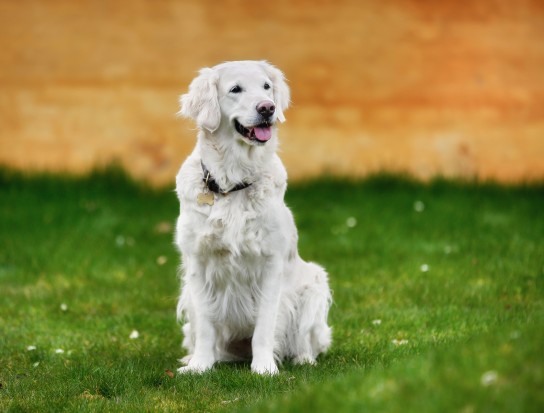Hurricanes, tornadoes, floods, fires, blizzards - nature has its fury days from time to time, not to mention the man-made threat of international terrorism. No-one is exempt from the possibility of being personally affected by such a disaster. You cannot prevent one but you can prepare for one.
1) Pre-emptive Planning
Vaccinations: make sure your pet is up to date with his/her vaccinations. Your veterinarian usually informs you when the annual booster is due, but this is not guaranteed to happen. Rabies vaccination is essential in addition to the standard multi-vaccine.
Identification: make sure your pet can be identified in the event that you are separated. A microchip or tattoo are important forms of identification but this should optimally be combined with a collar tag of some sort, as not all rescue personnel will be equipped with microchip scanners or quick access to tattoo/microchip databases. Likewise if a member of the public comes across an animal with a collar tag on they are more inclined to attempt to trace its owner. The collar tag should ideally contain a rabies tag, your home address, a phone number where you can be reached, and an out-of-state number of someone that you will be in contact with during or soon after the disaster/evacuation.
Recent photo: it is a good idea to have a recent photograph of your pet(s) in a safe place so that if the worst did happen and you were separated, you have the materials to hand to immediately make posters etc. Make a note of any distinguishing marks or features on your pet so you can provide a more accurate description.
Food: have at least a 2 weeks supply of pet food (and water) stored at all times. Store dry food in watertight containers, and if you store canned food do not forget to store a can opener nearby! A few treats should also be stored if possible to provide them with some comfort.
Medications: always keep a back-up supply of your pets medications. Your veterinarian will be closed for business during a disaster so your pet has a serious medical condition, you may not be able to obtain those crucial tablets for a few weeks.
Transportability: make sure you possess a secure pet carrier for small dogs, cats, rabbits and small mammals. Use the carrier at home before disaster strikes, so your animal is used to it. Larger dogs must have a secure leash or harness. In a panic, your pet may try to escape so secure transport is essential. If your dog rides with you in your car, keep a leash in the car so your dog can be safely controlled if you have to leave your vehicle.
Identifying a pet shelter: for public health and safety reasons, most emergency shelters do not accept pets. In case disaster strikes a small area that just happens to include your home, make sure you have numbers handy of hotels and motels in your area that accept pets. In the event of a wider area being affected, or a mass evacuation, you will need to contact your local emergency management office, animal shelter or animal control office. Remember, pet shelters may only accept your pets if you can provide proof of vaccination so keep your vaccination card somewhere safe.
Start a buddy system with a friendly neighbour: arrange to check on each others pets in the event of you not being home when disaster strikes. You will need to provide them with a key to your home. Brief your buddy on any medications necessary, discuss mutual evacuation plans and agree to care for one anothers pets in your/their absence. Inform your veterinarian of this arrangement and have your buddys number put in your file at the vets just in case.
Pet survival kit: consider packing a pet survival kit to have available if disaster strikes. The kit should be assembled in an easy to carry, waterproof container and stored in a cool, dry area. Food and medications will need to be replaced from time to time in accordance with their use-by dates. Some medications may need to be refrigerated. It is wise to keep an emergency first aid guide together with your survival kit, such as our downloadable Pet Doctor Online Pet Emergency Guide.
Suggested components of Pet Survival Kit:
2 week supply of food (dry and canned)
Can opener
Spoon
2 week supply of water in sealed plastic bottles
Food & water bowls
Secure pet carrier for each pet, labelled with your contact information
Copy of medical history, including vaccination record
List of emergency contact telephone numbers
Disaster preparedness guide
Emergency First Aid guide (see above)
Emergency First Aid kit (see below)
Flashlight
Radio
Batteries (radio, flashlight)
Medications
Instructions (notification of allergies, medications, veterinarian details)
Muzzle
Comfort items (toys, blankets, treats)
Spare collar, leash, harness
Cat litter, tray, pooper scooper
Paper towels
Trash bags for waste disposal
Maps of local area
Recent photo of each pet
Pet First Aid Kit: Your local vet clinic may well be closed due to the disaster. In fact, if the whole region is affected you might not have access to any veterinary care for a while as relief teams will prioritise human casualties. This is when having your own pet first aid kit can keep you one step ahead.
Suggested components of Pet First Aid Kit:
Oral rehydration powder (for reconstitution with water)
Antidiarrheal tablets/liquid
Activated charcoal (in case of poisoning)
Medications specific to your pet
Routine preventative medications (e.g. heartworm, fleas, ticks)
Antiseptic scrub (Betadine, Nolvasan, Hibiscrub)
Saline solution (for rinsing wounds)
Sterile eye rinse
Antibiotic eye ointment
Antibiotic ointment for wounds
Hydrogen peroxide
Styptic powder (clotting agent)
Alcohol wipes/prep pads
Gauze pads and rolls
Latex gloves
Ice cream sticks (can be used to splint fractured bones)
Elastic bandage rolls
Cotton bandage rolls
Cotton wool
Non-adherent bandage pads
Bandaging tape
Scissors
Tweezers
Syringes
Thermometer
Towel and washcloth
Tourniquet

 Reasons Why Your Dog May Have Problems Sitting
Reasons Why Your
Reasons Why Your Dog May Have Problems Sitting
Reasons Why Your
 How To Enrich The Lives Of Rabbits, Guinea Pigs, Hamsters And Gerbils
How To Enrich The
How To Enrich The Lives Of Rabbits, Guinea Pigs, Hamsters And Gerbils
How To Enrich The
 Testicular Cancer In Male Dogs
Testicular Cancer
Testicular Cancer In Male Dogs
Testicular Cancer
 High Strung Kitties
In today’s world stress is very prevalent. I don’t belie
High Strung Kitties
In today’s world stress is very prevalent. I don’t belie
 Wooden Pet Urns- A Perfect Memorial
Wooden Pet Urns- A Perfect Memorial
The Array
Wooden Pet Urns- A Perfect Memorial
Wooden Pet Urns- A Perfect Memorial
The Array